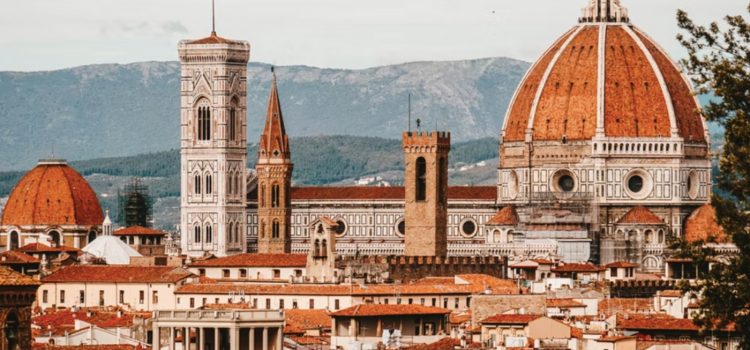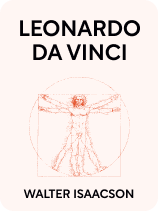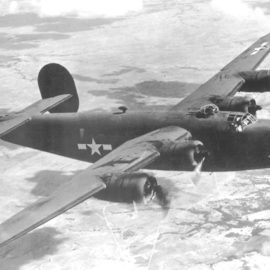

This article is an excerpt from the Shortform book guide to "Leonardo da Vinci" by Walter Isaacson. Shortform has the world's best summaries and analyses of books you should be reading.
Like this article? Sign up for a free trial here.
What did Leonardo da Vinci do in Florence? What kind of people did he meet in Florence?
Leonardo da Vinci practically grew up in Florence, where he learned new ideas and subjects. He returned to the city again as an adult, but it wasn’t as colorful as it was before.
Keep reading to learn how Leonardo da Vinci flourished in Florence.
Florence (1464-1482)
In 1464, Leonardo began living with his father in Florence, the perfect setting for young Leonardo’s development. As explained by Walter Isaacson in the biography Leonardo da Vinci, Florence was a melting pot of new ideas. Its intellectuals believed in the ideals of Renaissance humanism, especially in finding happiness through knowledge. The growing upper class was keen to display their wealth through their arts patronage, giving artists opportunities to create and collaborate.
Leonardo’s Apprenticeship With Verrocchio
In 1468, Leonardo’s father got him an apprenticeship with Andrea del Verrocchio, an artist and engineer. Isaacson says the apprenticeship offered Leonardo opportunities to learn fundamental painting techniques he would later use more effectively than his contemporaries, two of which include: 1) Drapery studies and chiaroscuro, which used shading to make images appear three-dimensional. 2) Sfumato, which lightly diffused borders instead of sharply delineating edges.
According to Isaacson, Verrocchio’s work was an important influence on Leonardo. For example, Verrocchio’s statue of David (which Leonardo likely modeled for) has many hallmarks that Leonardo would learn and surpass: the dynamic body, the beautiful curls, the anatomical preciseness, and the mysterious facial expression.
Leonardo’s First Experience With Patronage: The Medici Family
The Medici were de facto leaders of Florence who helped shape the Renaissance era through their patronage of the arts. Isaacson explains, however, that some artists were more successful than others in securing that patronage. For example, Botticelli earned their support by inserting members of the Medici family into historical and biblical paintings. Leonardo, on the other hand, didn’t compromise his work to court favor. (Shortform note: Some refer to the Medici as the “godfathers” of the Renaissance, and with good reason. They fostered the arts using their own money and, thanks to their diplomatic savviness, led a period of relative peace.)
Isaacson says this was a habit Leonardo continued throughout his life: He sought and took money from patrons, but only for work that he was excited about. He wasn’t afraid to leave employers waiting while he found the right way to approach a piece of work, or to ignore them altogether if the work they wanted him to do was uninspiring.
Florence, Again (1500-1506)
Leonardo returned to a different Florence from the one he had known. The city had gone through a conservative period and lost the vibrancy of its culture and economy. However, the Florentines were closing that chapter and returning to their roots. Isaacson argues that, at first, Leonardo fit well into this cultural context. He symbolized what Florence was striving to return to, and he played the part of a stylish eccentric.
Leonardo’s Workshop
In Florence, Leonardo opened a workshop where he fostered a collaborative approach. Leonardo would paint an original version of a work and teach his assistants to produce copies. Isaacson explains that, often, those copies were being produced at the same time as the original, so Leonardo used them to test out different ideas, resulting in different versions of the same paintings. Also, he didn’t sign his paintings, since they were a product of the workshop rather than a product of Leonardo. This collaborative process led to some paintings being difficult to label as authentic Leonardos.
(Shortform note: This setup corresponded with the organization of most artists’ workshops in Renaissance Italy. It allowed the workshop’s master to produce works of art for all kinds of patrons, whether they were as rich as a duke or not. It also allowed for experimentation without losing the workshop’s signature style which differentiated it from the competition.)
A New Patron: Cesare Borgia
In 1502, around the age of 50, Leonardo worked for his most ruthless boss yet: Cesare Borgia. Cesare was on a military campaign to subdue several city-states and bring them under the power of the Pope (his father). During that campaign, Isaacson believes that Florence offered Leonardo’s services as part of a diplomatic package to ensure that Cesare wouldn’t invade the city. This placement allowed Leonardo to live out his military engineering dreams. Isaacson reports that, during this time, Leonardo:
- Offered advice on how to make fortresses stronger
- Designed ways to fortify dikes and connect harbors to the sea
- Built a self-supporting bridge
- Drew innovative aerial maps using an odometer he had designed
(Shortform note: Cesare Borgia was synonymous with treachery and violence throughout Italy. Knowing that he had more enemies than allies and that even his alliances were shaky, he hired Leonardo to help protect his territories. In The Prince, Niccolò Machiavelli cites Cesare Borgia as an example of how fortune can make or break a leader. As the son of a pope, he had enormous success establishing his own state in central Italy. But soon after his father died, his state crumbled. He failed to either foresee the danger or adapt to the times, and all his cunning and brutality couldn’t protect him from being overthrown. Machiavelli argues that if Cesare had better prepared for the inevitability of his father’s death, he might have held onto power longer.)

———End of Preview———
Like what you just read? Read the rest of the world's best book summary and analysis of Walter Isaacson's "Leonardo da Vinci" at Shortform.
Here's what you'll find in our full Leonardo da Vinci summary:
- A detailed look into the life, accomplishments, and struggles of Leonardo da Vinci
- Lessons from his life and work that you can apply to your own life
- What set Leonardo apart from other artists at the time






